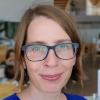Satyanad Kichenassamy Université de Reims Champagne-Ardenne, LMR (CNRS, UMR9008) and
GREI (EPHE-PSL and Sorbonne-Université),
Mathematical reasoning as an outgrowth of Vedic ritual.
The earliest text that formulates the theorem on the square of the diagonal of an oblong as a universal statement is Baudhāyana’s Śulvasūtra. This theorem is embedded in a discourse without diagrams [7], that indicates the first extant rigorous derivation of it [4]. The invention of mathematical activity and based on inferences on word-representations reflects closely the relations between language, thought and action in Vedic ritual [6]. Later Indian mathematical inventions were still based on this view, combined with the relatively late introduction of writing. This accounts for the invention of two new forms of representation [5], namely the positional system with zero, and literal algebra. While these developments are best understood against the backdrop of modern Indology, especially at EPHE in Paris [1–3, 6], we will show here on a few texts that do not require familiarity with Indology, how the view that mathematical activity is a process of
inferences on word representations, to be performed by free individuals, was part and parcel of a reflexive analysis of the successes and failures of Vedic ritual.
[1] Filliozat, Pierre-Sylvain, 1990. « Yukti: le quatrième pramāṇa des médecins (Carakasaṃhitā, Sūtrasthāna, XI, 23) ». Journal of the European Āyurvedic Society, 1 (1990), 33-46.
[2] Houben, Jan E.M., 1991. The Pravargya Brāhmaṇa of the Taittirīya Āraṇyaka. Delhi: Motilal Banarsidass.
[3] Houben, Jan E.M., 2000. “The ritual pragmatics of a Vedic hymn: The 'riddle hymn' (Ṛgveda 1.164) and the Pravargya-ritual.” Journal of the American Oriental Society, 120 (4) (2000), 499-536.
[4] Kichenassamy, Satyanad, 2023a. « Hétérométrie, cohérence et discours apodictique : la dérivation du théorème du carré de la diagonale chez Baudhāyana », Journal Asiatique, 311 (2), (2023), 267-303
[5] Kichenassamy, Satyanad, 2023b. “New perspectives on the development of the Indian positional system in the light of Sanskrit, Pali and Tamil sources,” Gaṇita Bhāratī, 45 (1) (2023), 1-21.
[6] Kichenassamy, Satyanad, 2025a. « Philologie et épistémologie mathématique en Inde ancienne», Annuaire de l'École pratique des hautes études (EPHE), Section des sciences historiques et philologiques, 156 (2025), 408-414.
[7] Kichenassamy, Satyanad, 2025b. “Geometry without figures: Mathematics as apodictic discourse in Indian texts,” in Vedic Education and Ancient Indian Astronomy, Parvathy K. P. & Satyabhama N. (eds.), Motilal Banarsidass, New Delhi, 2025, pp. 105-135.

